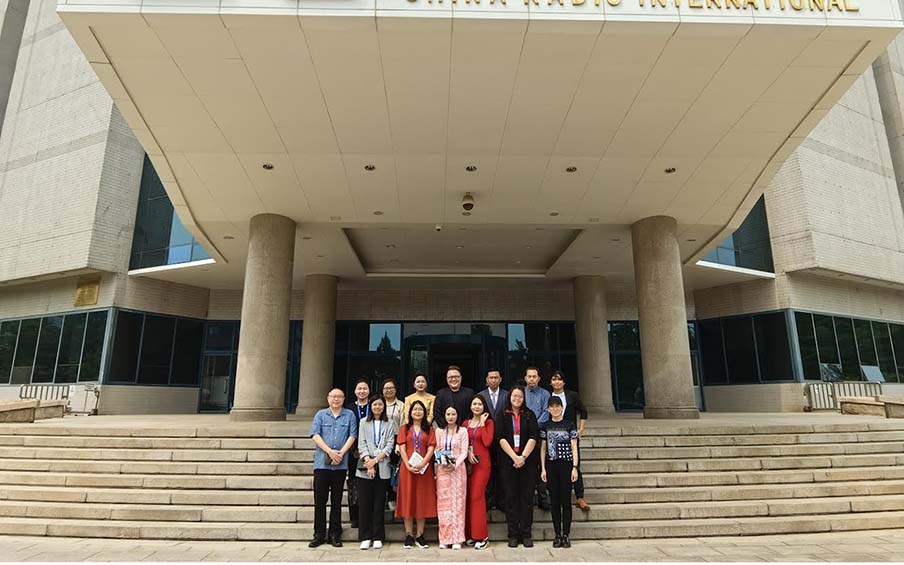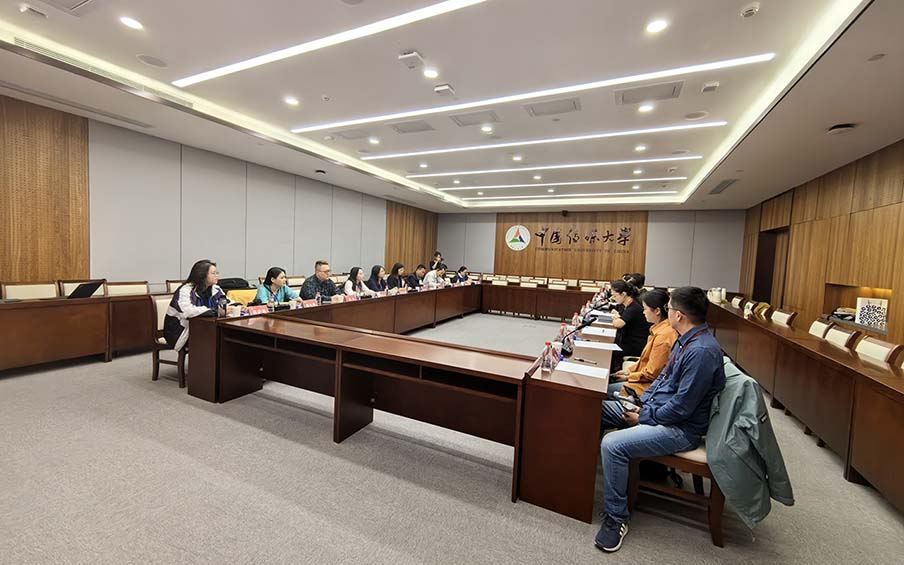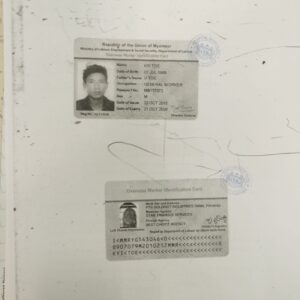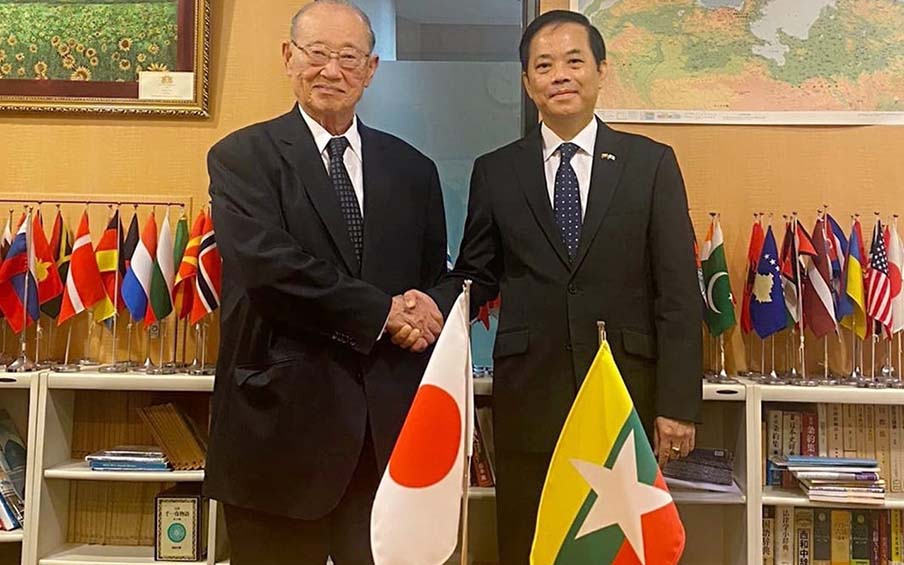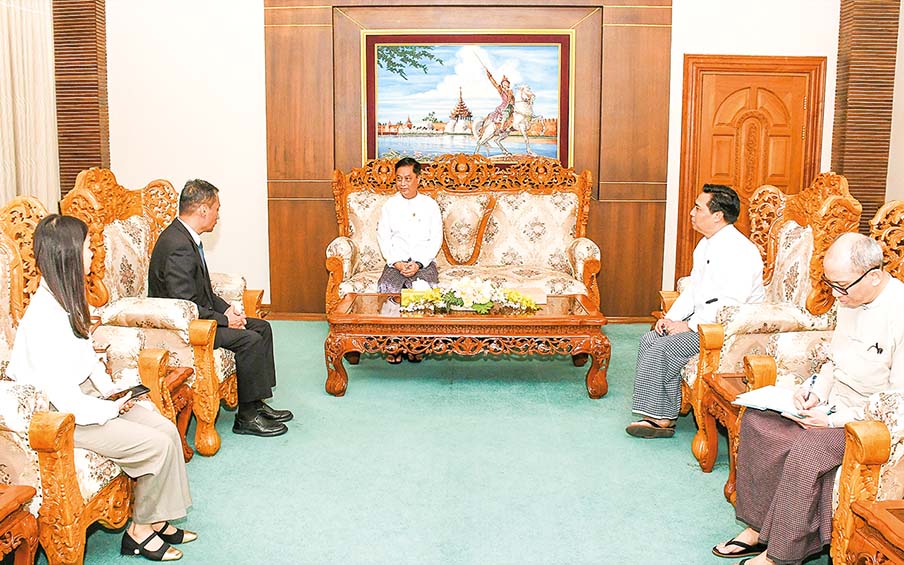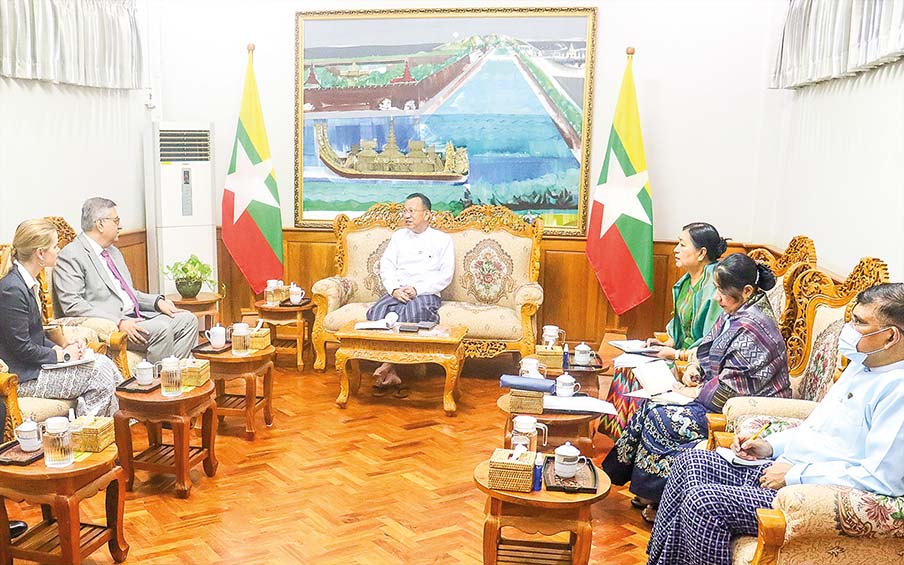(Continued from
yesterday)
Tencent
When we visited multi-conglomerate Tencent in Beijing on the evening of 23 April, we realized its commitment to integrity, proactivity, collaboration and creativity, supporting social sector development with the digitalization of charity, rural revitalization, primary healthcare, carbon neutrality, education innovation, public energy service, basic science research and digital culture. Its services include social networks, music, web portals, e-commerce, mobile games, internet services, payment systems, smartphones, and multiplayer online games. It operates the instant messengers Tencent QQ, WeChat, Tencent Music, Wexin pay, Weixin search, Weixin Channels (videos and live stream platform for everyone to record and create), mini-programmes with easy access to products and services and mini-games.
Kuaishou
During our visits to Kwai that evening, we gained in-depth knowledge of live sales through communication-based and service-based digital human solutions (virtual idols, virtual customer service, AI streamers, celebrity branding, and livestream selling). We visited the Kwai Broadcasting Centre, shared service centre and canteen.
Kuaishou (Kwai) is a popular platform in Brazil, covering more than 30 countries in Latin America, the Middle East, North Africa and Southeast Asia. One can create short videos with magic effects and easy-to-use editing tools, voice-over, digital humans, music, and filters through the Kwai app. GIF Kuaishou was launched for users to create GIFs, which, in essence, are the earliest form of short videos.
Kuaishou’s cumulative donations to charity projects exceed 200 million RMB. They facilitate rural revitalization, entrepreneurship, and employment of people with disabilities, care for older adults and veterans, and promote accessibility. Its innovative recruitment model also helps promote the employment of blue-collar workers, graduates, migrant workers, etc.
Communication University of China
The Myanmar media delegation also paid a visit to the Communication University of China (CUC) on the morning of 25 April. The CUC is one of China’s key universities of Project 211, directly administered by the Ministry of Education. There are currently six faculties, one co-innovation centre and five directly affiliated schools, covering journalism, radio and television arts, journalism and communication, art theory, theatre film and television, linguistics and applied linguistics, communication and information systems, electromagnetic field and microwave technology, and animation. The CUC has seven post-doctoral research centres, seven doctoral programmes, 35 doctoral programmes (subordinate disciplines), 18 master programmes, 95 master programmes (subordinated disciplines), eight professional master categories and 84 bachelor programmes. It is a well-known university in the field of information communication, with approximately 18,000 students. The CUC occupies a total of 499,800 square metres of buildings, including a seven-storey library, four four-storey canteens with food delivery service and a number of research centres.
A Myanmar media delegation attended the presentation of digital virtual humans with AI technology at the State Key Laboratory of Media Convergence of the CUC. Lu Di, the party secretary and deputy researcher of the New Media Research Institute of the CCU, explained the latest development of 5G technology and AI technology under the theme of China’s new media integration development and cutting-edge AI technology. Daw Cho Thet Tun from Myanmar Golden Phoenix asked about the impacts of AI on humans in the media industry. Lu Di pointed out that it is just different forms of presentation and communication. She affirmingly confirmed that China has also experienced and overcome difficulties and challenges in the new media evolution. She assured that the media industry will play a pivotal role in future with human intelligence support combined with AI and 5G and 6G technology advancement.
The Myanmar media delegation also visited the Media Museum, which the birth and development of wireless radio broadcasting and TV, the first-ever music box that could be found on streets with coin payment for music, private radio emergence, animation video small theatre and establishment and growth of Yanan Xinhua Broadcasting Station can be found.
With a 5G network and advanced technology, they can provide news coverage from remote areas, like an interview in the same room. They can broadcast live multi-angle shows, meetings, and crop harvest festivals live on one screen from 70 different areas across China, among others.
CCTV.net
On the afternoon of 25 April, we did a group tour of cctv.com. Their mobile app covers long and short videos, livestream sections, slow live for nature life, meetings, forums, fashion week, provincial tour shooting, and online museums, among others. It provides services to meet the customers’ satisfaction. They showed how Xiao C AI works by changing appearance, action, and motion, like a person speaking behind. This AI was used in broadcasting during the Winter Olympics. One can study political and educational events itself. Xi’s speech and instructions can be searched according to the calendar on the screen. Big data also computes Xi’s favourite food, speech, possible location, and personal staff analysis, as the representatives from CCTV.net explained.
On the evening of 25 April, the Myanmar delegation visited Olympic Park, having three big facilities: National Stadium (Bird’s Nest), Water Cube and National Indoor Stadium and strolled around Wangfujing Street, the most well-known and bustling shopping street with tourists and domestic visitors.
Through this insightful, informative, and engaging new media workshop, we studied how 5G networks, cloud computing, big data, and advanced AI technology can empower content creation and contribute to media development. I am so amazed to learn about AI, China’s technological advancement, and new media development. I hope this great opportunity will help me adapt to the new media revolution in Myanmar in future.
China-Myanmar Media exchange
The Myanmar Media delegation visited the China Radio International on the morning of 26 April and participated in a media talk show.
China Central Television, China Radio International and China National Radio (CNR) were unified to become the China Media Group, Mr Wang Xiao Feng, deputy director, explained. They provide services in 26 languages of countries in Asia and Africa.
Media talk show at China Radio International
During the visit to the Myanmar Department of China Radio International, the members of the Myanmar Media Delegation participated in the New Media talk show at New Media Studio. They exchanged views with media colleagues to discuss the China-Myanmar friendship.
Kywe Kywe Htike, deputy director of the MITV, said that as far as I’m concerned, travel vlogs highlighting the development of China, beautiful landscapes, and culture will attract Myanmar’s people. Captain Myo Min Thant from Myawady expressed that he was a big fan of the historical Chinese series. Myanmar people got to know Chinese culture and tradition through binge-watch series and movies. Ei Myat Mon from The Global New Light of Myanmar said that China’s Spring Festival attracts people’s attention. They watched a video clip showing agricultural technology development in a village in Yunnan Province and farming methods for premium quality agricultural produce. We can see how they boost community-based tourism. Kywe Kywe Htike said that it was a good programme for the Myanmar people as it can give them community knowledge.
Thereafter, they shared their experiences at the New Media Workshop in China.
“Through this media workshop, I came to realize that we need to exert concerted efforts to adapt to new media evolution from traditional media. During our visits to Tencent, Kuaishou, CCTV.net and Communication University of China, we witnessed media development with the support of the AI and 5G network,” Ei Myat Mon from The Global New Light of Myanmar shared.
Captain Myo Min Thant was amazed to learn about the latest technology in China, and although we still have a long way to go, we will strive for development for sure.
Kywe Kywe Htike said that “it is her fifth time she came to China. This time, I realized that short videos are becoming more popular and effective to attract the attention of the audience. I got the idea to present the news effectively with a short video. I attended a workshop in China back in 2012, and I now see the big impact of the 5G network on connectivity and innovation. I looked up to China’s new media development with technological advancement. I want to attract the attention of younger generations with short video presentations.”
We also discussed how cultural exchange will foster understanding and respect among diverse communities and promote peaceful relations between two countries.
China-Myanmar cooperation in various fields was also discussed, with the presence of Shwe Yamin Oo, presenter of the Sky Net, Lwin Min Oo, Editor-in-chief of the Standard Time Daily and Wint Wah Han, presenter of Vidya Myanmar.
(To be Continued)


